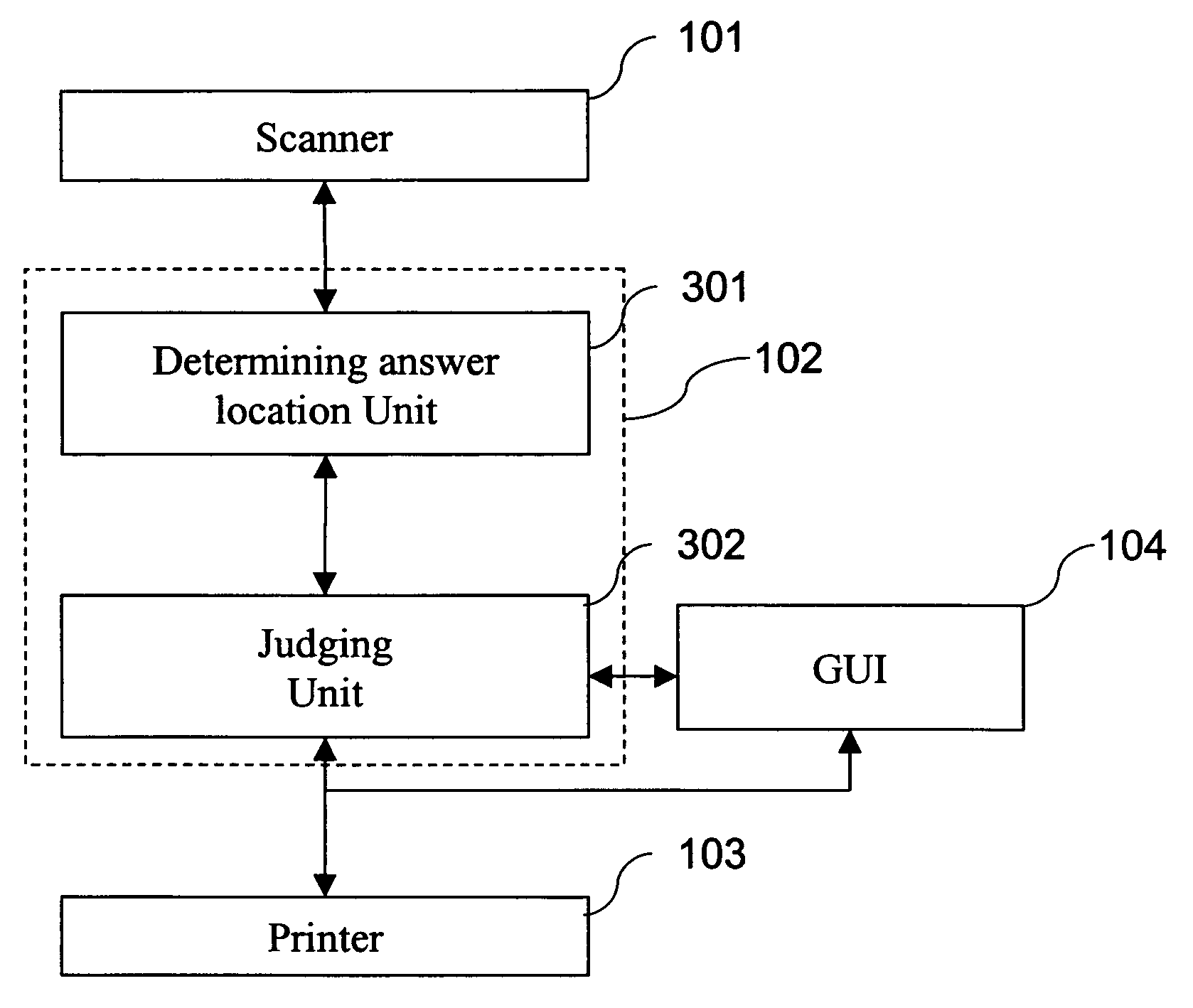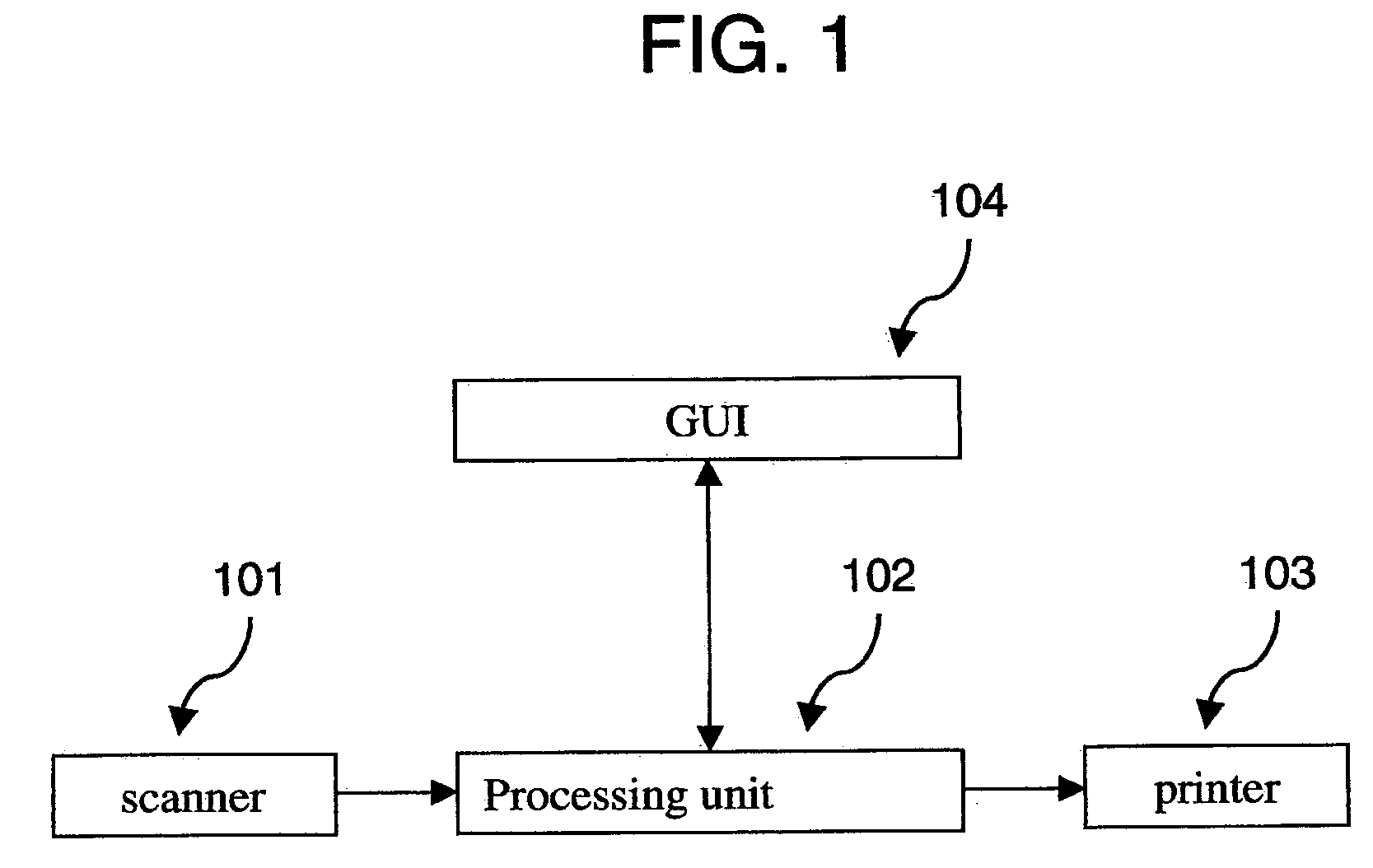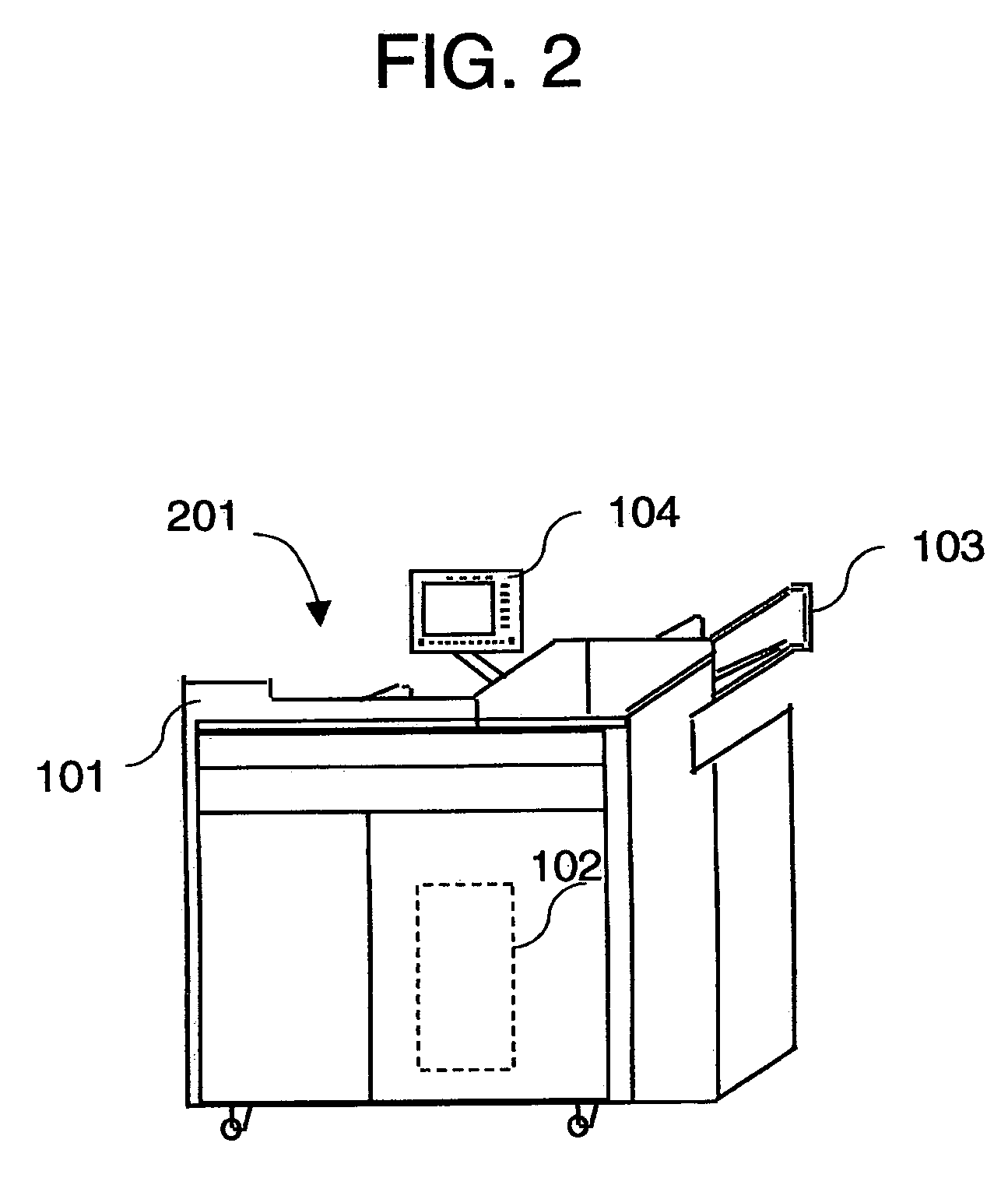Apparatus and method for automatically analysing a filled in questionnaire
- Summary
- Abstract
- Description
- Claims
- Application Information
AI Technical Summary
Benefits of technology
Problems solved by technology
Method used
Image
Examples
example 1
[0065]FIG. 6A is an example of a multiple-choice test in which correct answers (601) are filled in on paper, the so-called first master. In FIG. 6B the second master, where all wrong answers (602) are filled in on paper, is shown. Both the first and second masters are then scanned (101) and handled by image processing in the determining answer location unit (301) resulting in finding all possible answer locations.
[0066]FIG. 7A is an example of a filled in multiple choice test—filled in questionnaire. The filled in questionnaire is scanned (step S405) and automatically judged (step S406) resulting in a corrected questionnaire (i.e., a questionnaire marked up with corrections) (step S505). In FIG. 7B, an example of the corrected questionnaire is shown. Examples of correction symbols that could be used on the corrected questionnaire are ‘this should be the answer’-symbol (701), ‘this is not the correct answer’-symbol (702), and ‘the correct answer is filled in’-symbol (703). Furthermo...
example 2
[0067]FIGS. 8 and 9 examples involve hand-written form-free questionnaires. These are examples of embodiments of the invention illustrating that any form of questionnaire can be judged by the invention, without the need that an operator digitally configures the configuration process. The questionnaire of FIG. 8 is filled in on paper by John (801). John has a test result of 6.7 due to 2 answers being correct out of 3 (802).
[0068] Incorporated in the embodiment(s) of the invention is the possibility to have two correct answers for one question. For example, the first question in FIG. 8 has two correct answers: a ripe tomato is red and a growing tomato is green. Depending on the scoring model, score points are given for example per correct answer, per correct answers, are not wrong answers, or per correct question.
[0069] The questionnaire of FIG. 9 is filled in on paper by George (901). George has a test result of 3.3 due to 1 answer being correct out of 3 (902). Several such questio...
example 3
[0071] The configuration process is done partly on paper by using the inquiries of FIGS. 11A and 11B. FIG. 11A is an example of an inquiry in which no answers are filled in. In FIG. 11B all answers for this inquiry are filled in on paper. In FIG. 12A to FIG. 12F six inquiries filled in are shown on paper, each filled in by a different person. These six questionnaires are scanned in (step S405) and are automatically judged (step S406 described more in detail with FIG. 5B). An example of the result of this step is depicted in FIG. 13: an example of a distribution of answers made for each of the answers overlaying the scanned in questionnaire (1301). It should be possible in an apparatus incorporating the invention that per inquiry question, sometimes more than one answer could be filled in and so more than one answer per question is contributing to the distribution of answers. This is done by adding up the number of answers given for an answer location and relating the total of number...
PUM
 Login to View More
Login to View More Abstract
Description
Claims
Application Information
 Login to View More
Login to View More - R&D
- Intellectual Property
- Life Sciences
- Materials
- Tech Scout
- Unparalleled Data Quality
- Higher Quality Content
- 60% Fewer Hallucinations
Browse by: Latest US Patents, China's latest patents, Technical Efficacy Thesaurus, Application Domain, Technology Topic, Popular Technical Reports.
© 2025 PatSnap. All rights reserved.Legal|Privacy policy|Modern Slavery Act Transparency Statement|Sitemap|About US| Contact US: help@patsnap.com



